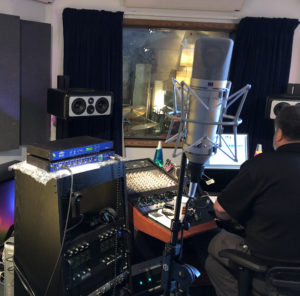Last month we took final prototypes of our new Model 5512 Audio Interface and Model 5518 Mic/Line Interface units for a “real-world test drive” at a well-regarded music recording studio in Chicago. The ‘5512 and ‘5518 support SMPTE ST 2110 and utilize our latest analog and digital circuit designs. These units are hardware “cousins” with the new Dante-enabled Model 5412 Audio Interface and Model 5418 Mic/Line Interface. We knew that the performance specifications of all the units as measured by our test equipment was very good. While not the only goal, achieving solid specifications was important and necessary. But for us that was just the first goal in knowing if a product was really ready for use in the field. Before shipping the first units we needed to know the results of human audio experts performing actual listening tests, especially as they related to the Model 5518’s critical microphone preamplifier circuitry. (An entirely-new mic-pre design is used in both the Model 5418 and Model 5518.) The question was simple: “we know they measure well, but do they actually “sound” good?” And most critical was: “do the mic/line inputs amplify the sound without adding significant noise or coloration?”
My colleague arrived at the studio early for our 9 A.M. appointment, forgetting that music studios typically work late into the night and then start later in the morning! After sitting in his car for a little while the chief engineer and I arrived and things finally began to get going. Lights and equipment were turned on and the coffee maker started to percolate. While enjoying our first cup of coffee a plan was put together. We began by patching our units into their signal chain, followed by the engineers doing some basic listening tests. They used known recorded sources, checking levels, experimenting with user controls, and visually monitoring the signals while they were in the digital domain. The results, as expected, were positive as we were just dealing with digital sources and line-level analog input and output signals.
The chief engineer then selected three microphones from their large and varied collection: a Neumann U67 re-issue, a classic Sony condenser, and an RCA-inspired ribbon model from AEA. After a solid hour of listening with several acoustic sources and lots of experimenting with the user controls, the consensus was that the Model 5518’s mic-pre performance was very good. The audio quality was perceived as being solid with a low noise floor, good transient response, and an overall pleasing sonic character. Actually, the pleasing character was that of the microphones’ themselves as there was little coloration imparted by the Model 5418’s circuitry. In the end there were no doubts that the unit would be well-suited for whatever broadcast, post-production, or audio recording task it might be called upon to support. And this should also hold true for the Model 5418 as its analog and related analog-to-digital converter circuitry is identical.
In conclusion, testing in both objective and subject environments resulted in uniformly-positive results. We’re now confident that the designs of these new units is solid and ready to go into the field. And while these units are primarily targeted to environments that are perceived as being non-critical, we’re certain that they will offer competitive performance in even the most demanding applications.
A final note: Not everything went perfectly during the listening process. We did identify a few bugs with the user controls and web pages. Those issues were subsequently resolved and we hope that there are few, if any, issues remaining. We’ll always welcome your comments, especially if these new products don’t meet your expectations.

